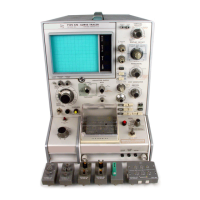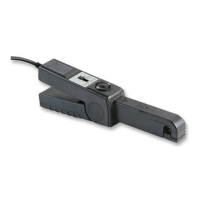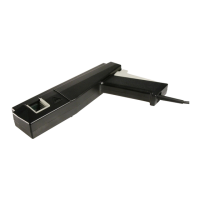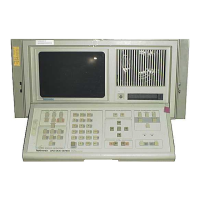Analog circuits
Figure 4-2 shows the analog circuitry block.
D/A converters control the programmed voltage and current, or voltage compliance and cur-
rent compliance. Each DAC has two ranges, a 10V full-scale output or a 1V full-scale output.
The DAC
outputs are fed to the summing node, FB. Either the V DAC or the I DAC has the
ability to control the main loop. If the unit is set for SV (source voltage), it will source voltage
until the compliance current is reached (as determined by the I DAC setting), and the current
loop will override the voltage loop. If, however, the unit is set for SI (source current), it will
source current until the compliance voltage is reached (as determined by the V DAC setting),
and the voltage loop will override the current loop. A priority bit in the V clamp/I clamp circuit
controls these functions.
The error amplifier adds open-loop gain and slew-rate control to the system to assure accu-
racy and provide a controllable signal for the output stage, which provides the necessary voltage
an
d
current gain to drive the output. Sense resistors in the HI output lead provide output current
sensing, and a separate sense resistor is used for each current range. The 1A range uses 0.2V
full-scale for a full-range 1A output, while all other ranges use 2V output for full-scale current.
Voltage feedback is routed either internally or externally.
There are four voltage ranges: 0.2V, 2V, 20V, and 1000V. The feedback gain changes for
only the 20V and 1000V ranges, resulting in three unique feedback gain values. A multiplexer
directs the voltage feedback, current feedback, reference, or ground signal to the A/D converter.
An opto-isolated interface provides control signals for both DACs, analog circuit control, and
A/D converter communication to the digital section.
4-6 Troubleshooting
2410-902-01.book Page 6 Monday, November 7, 2005 2:49 PM

